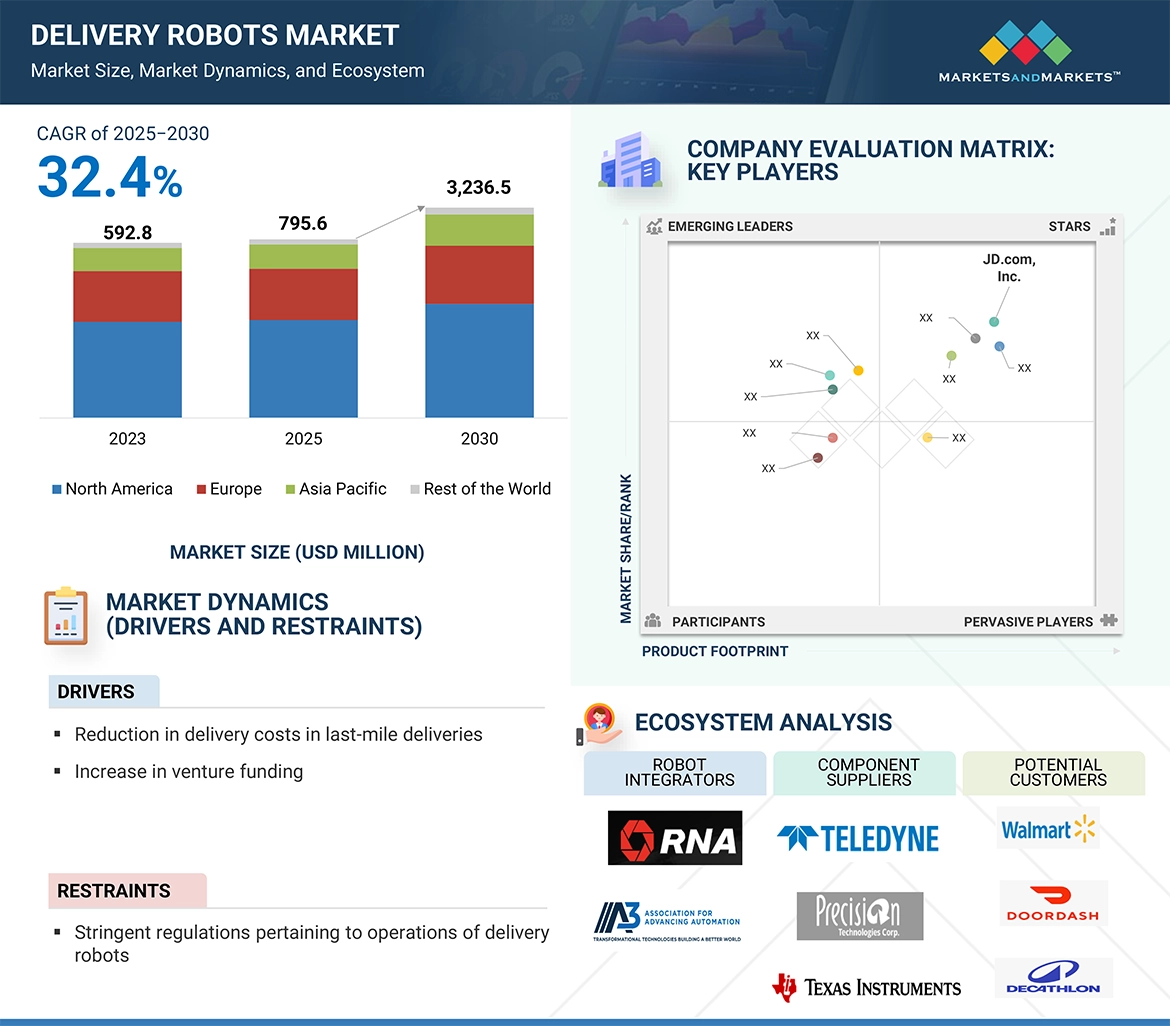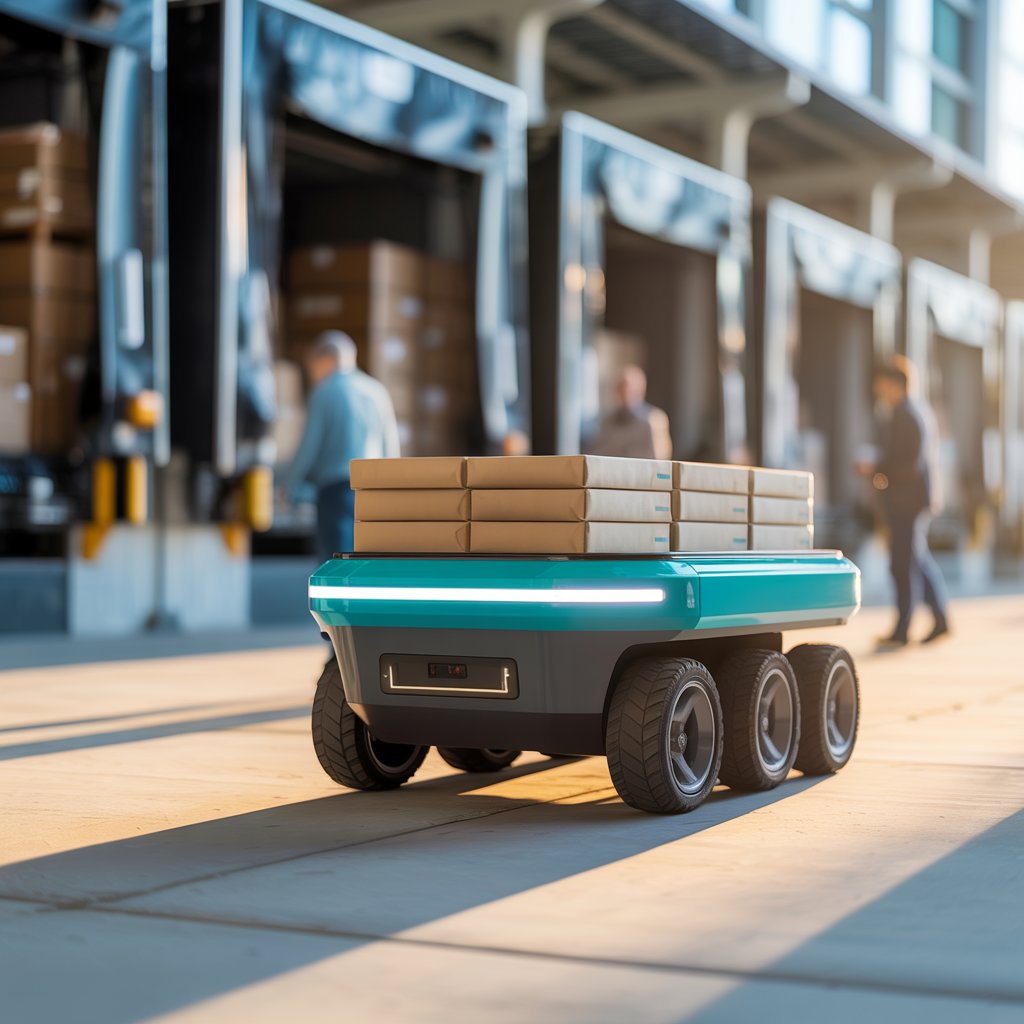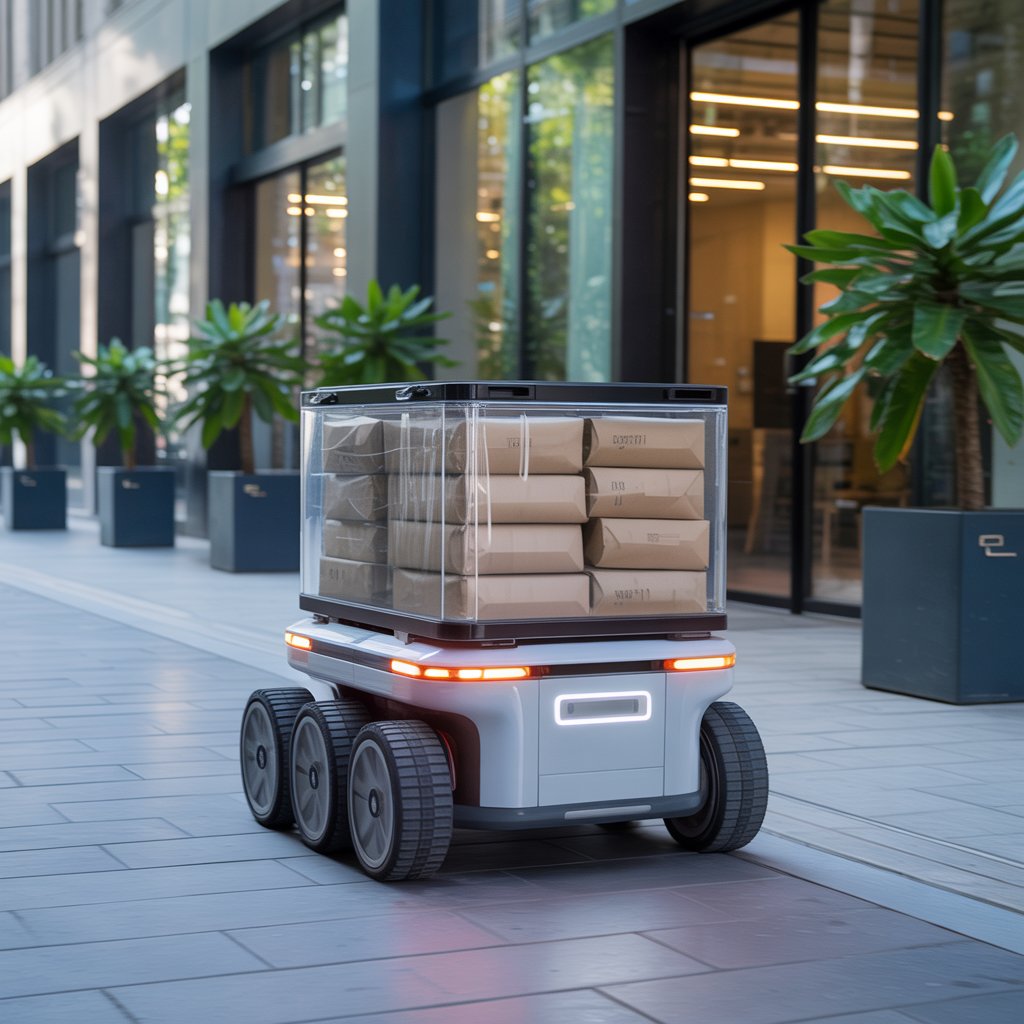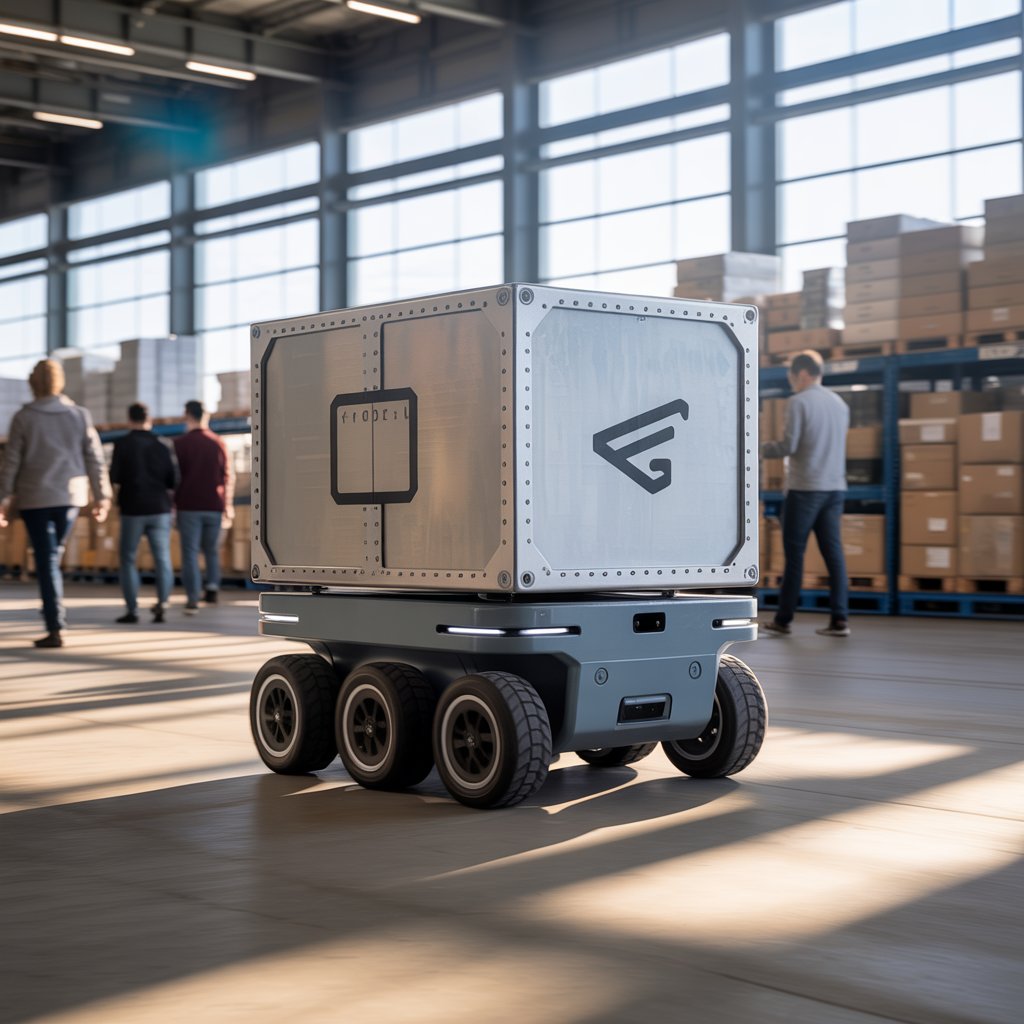The global delivery robots market is entering a pivotal phase of expansion, fueled by the convergence of automation, digital commerce, and the rising demand for efficient last-mile solutions. As industries continue to modernize logistics and operations, autonomous delivery systems are emerging as a transformative force. From retail and e-commerce to hospitality, delivery robots are reshaping how goods and services are transported, creating new opportunities across multiple sectors. The forecast for the coming decade suggests strong growth driven by technological maturity, consumer adoption, and sustainability goals that favor intelligent, contactless delivery systems.
Download Report Sample: https://www.marketsandmarkets.com/pdfdownloadNew.asp?id=263997316
Market Outlook and Growth Dynamics
The delivery robots market has experienced remarkable growth in recent years, and this trend is projected to accelerate significantly through 2032. The increasing pressure on logistics networks due to the boom in online shopping, coupled with labor shortages and rising delivery costs, has made automation an operational necessity rather than a luxury. According to industry analysts, the market for delivery robots is expected to grow at a robust double-digit compound annual growth rate over the next several years, with deployment expanding across urban, suburban, and controlled environments.
The surge in e-commerce activity has been a defining catalyst. As consumers demand faster, cheaper, and more convenient delivery options, companies are turning to robotic solutions that can navigate sidewalks, streets, and indoor environments autonomously. These systems help reduce delivery times, enhance accuracy, and cut costs associated with traditional delivery methods. At the same time, advancements in artificial intelligence, computer vision, LiDAR, and edge computing are making delivery robots more capable, reliable, and commercially viable.
Opportunities in Retail Automation
Retail is one of the most promising sectors for the deployment of delivery robots. The rise of omnichannel retailing—where physical and digital sales channels converge—has created new logistical challenges for stores managing same-day or curbside deliveries. Delivery robots provide a scalable solution that bridges the gap between online orders and physical fulfillment.
Large retailers are beginning to integrate autonomous delivery systems into their operations to streamline local deliveries, reduce dependency on third-party services, and improve delivery economics. In shopping malls and commercial complexes, indoor delivery robots are being used to transport goods, restock inventory, and assist customers in locating products. By automating repetitive and time-consuming tasks, these robots allow retailers to enhance productivity and reallocate human resources to more value-added activities such as customer engagement and merchandising.
In addition, retail environments are increasingly adopting micro-fulfillment centers—small, automated warehouses located close to consumers. Delivery robots play a crucial role in connecting these centers to nearby neighborhoods, creating hyperlocal logistics networks that support rapid delivery. This trend is expected to expand further as more retailers embrace localized automation strategies.
Inquiry Before Buying: https://www.marketsandmarkets.com/Enquiry_Before_BuyingNew.asp?id=263997316
Transforming the E-Commerce Landscape
E-commerce continues to be the dominant driver of demand for delivery robots. The exponential rise in online shopping has intensified the need for efficient last-mile delivery systems that can handle high order volumes without escalating costs. Delivery robots offer a practical and sustainable solution to this challenge by performing short-distance deliveries autonomously, particularly in dense urban areas where conventional vehicles face constraints such as parking limitations and traffic congestion.
E-commerce giants are increasingly investing in autonomous delivery solutions to optimize their logistics networks. Robots can deliver small parcels and groceries directly to consumers’ doorsteps, enabling faster fulfillment and reducing reliance on human couriers. These systems also support 24/7 operations, providing continuous delivery capabilities that traditional delivery models cannot match.
Furthermore, the integration of delivery robots with data analytics and AI-driven route optimization is improving operational efficiency across e-commerce platforms. Companies can now predict demand, allocate delivery fleets more effectively, and reduce the overall carbon footprint of last-mile logistics. As e-commerce growth continues to accelerate globally, the adoption of delivery robots will become a critical component of competitive differentiation and sustainability strategy.
Expanding Role in the Hospitality Industry
The hospitality industry presents another significant growth frontier for delivery robots. Hotels, resorts, and restaurants are increasingly turning to autonomous delivery systems to enhance guest experiences and operational efficiency. Robots are now being used to deliver food, beverages, linens, and amenities directly to guest rooms, offering convenience and maintaining privacy.
The post-pandemic emphasis on contactless service has further accelerated robot adoption in hospitality. Delivery robots not only reduce physical contact between staff and guests but also allow hotels to operate efficiently with smaller workforces. They can function around the clock, responding instantly to guest requests and improving overall service quality.
In the restaurant sector, robots are transforming food delivery models by handling both on-premise and off-premise operations. From transporting orders from kitchens to dining tables to completing last-mile food deliveries, these systems are helping restaurants reduce costs, enhance speed, and maintain consistency. As consumer expectations for quick and contactless service grow, the hospitality sector is likely to remain one of the most dynamic adopters of delivery robots.
View detailed Table of Content here – https://www.marketsandmarkets.com/Market-Reports/delivery-robot-market-263997316.html
Future Outlook: A Converging Ecosystem of Automation
Looking ahead, the delivery robots market is set to become an integral part of the global logistics and service landscape. As industries increasingly prioritize sustainability, efficiency, and innovation, delivery robots will serve as the backbone of next-generation logistics ecosystems. Future advancements in AI, cloud computing, and connectivity will further enhance their autonomy, making large-scale deployment across sectors more feasible.
The convergence of retail, e-commerce, and hospitality automation signals a future where autonomous delivery becomes mainstream. Delivery robots will not only improve logistics performance but also redefine customer engagement, enabling businesses to deliver faster, smarter, and greener. As cities evolve into smarter, connected ecosystems, delivery robots will stand at the forefront—symbolizing the seamless integration of technology, efficiency, and sustainability in the modern economy.




